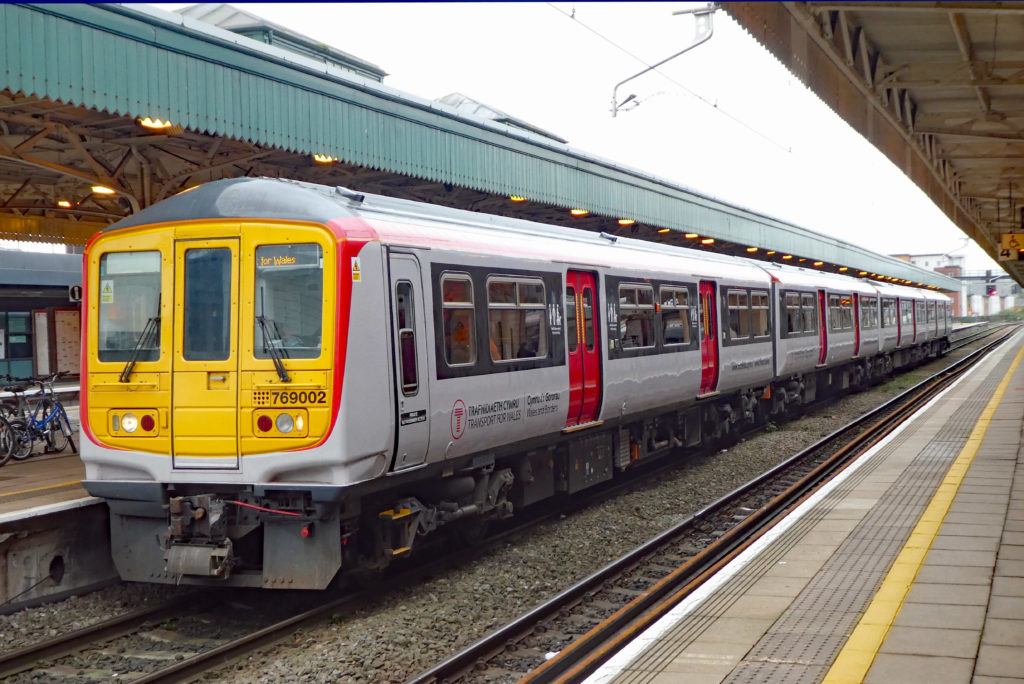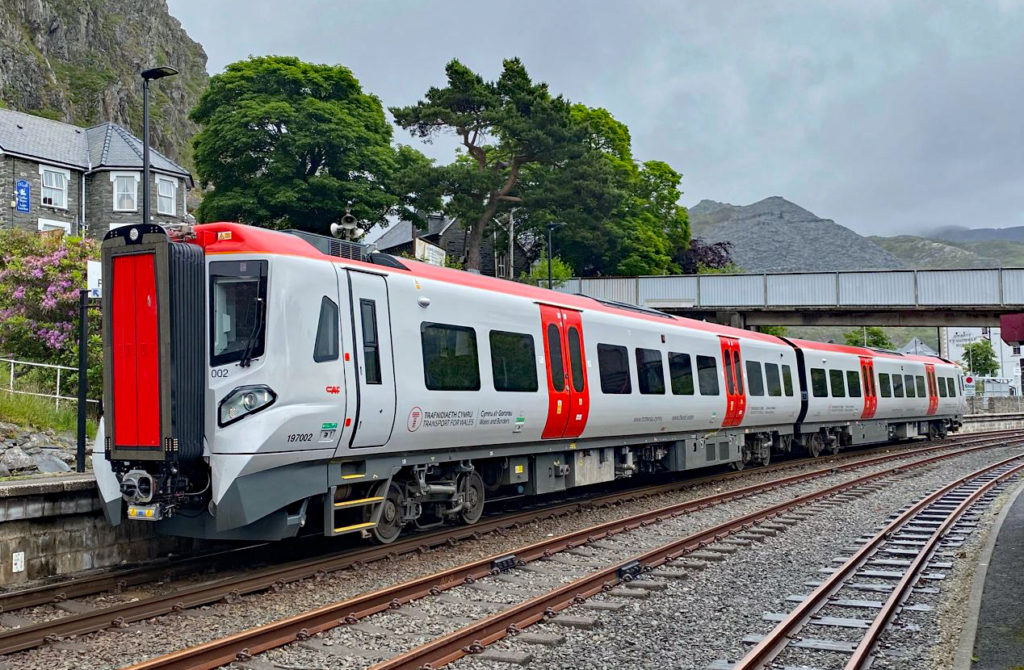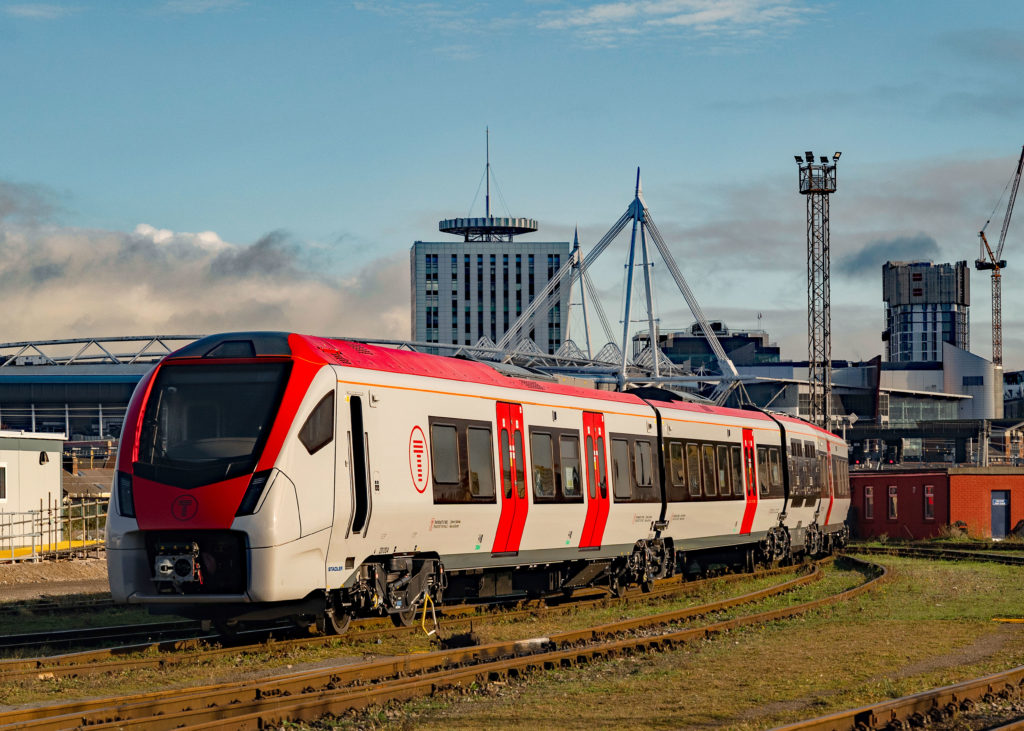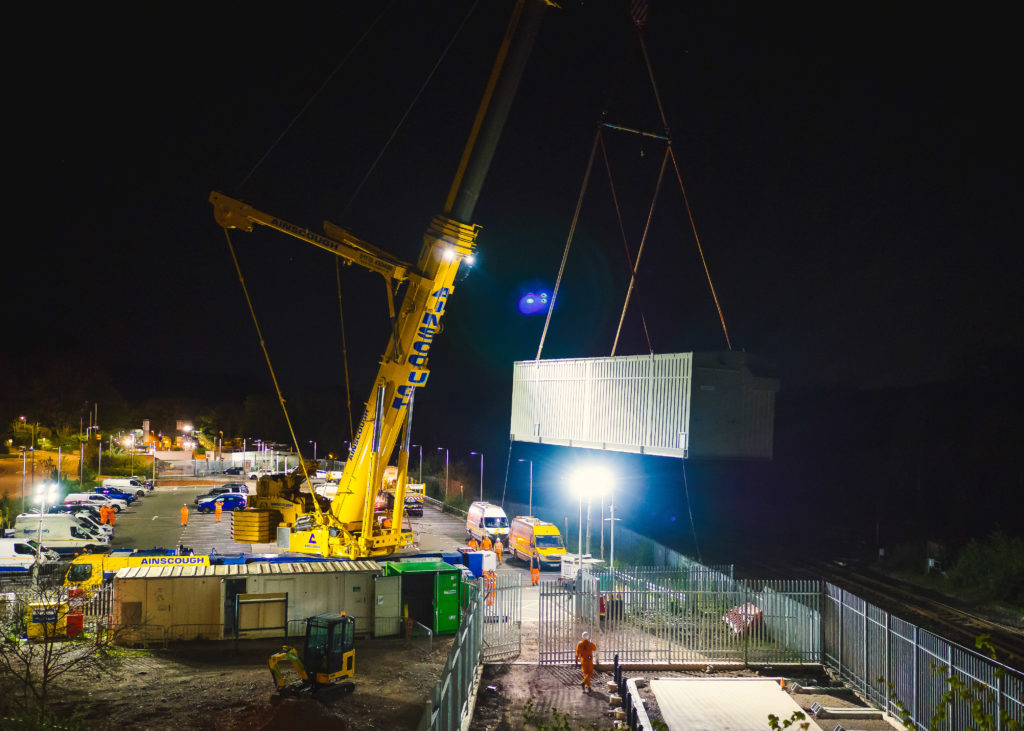The Well-Being of Future Generations (Wales) Act 2015 aims to improve the social, economic, environmental, and cultural well-being of the people of Wales by giving public bodies a duty to set appropriate objectives and act in accordance with sustainable development principles. These include long-term thinking and a collaborative, more joined up approach. A Future Generations Commissioner provides the required support and monitors compliance with these objectives which are supported by various strategies including one for a low carbon Wales, a sustainability plan, and the Welsh transport strategy.
These documents all stress the need for modal shift from car dependency to sustainable forms of transport. The most effective way of reducing transport CO2 emissions in the near-term is replacing car journeys with those on the public transport and active travel. However, this requires both infrastructure and behavioural change measures. To provide a more desirable alternative to the car, the image and the reality of public transport needs to be transformed with a metro-style frequency and better-connected integrated services. Planning Policy Wales also sets out a sustainable transport hierarchy for planning to prevent car-dependent developments.
Three Metros
The Welsh transport strategy sets a target of increasing journeys made by public transport, walking, and cycling from the current 32% to 45% by 2040. Its sustainable transport hierarchy promotes active and public transport over private cars. This includes the provision of coherent ‘Metro’ networks of low-carbon buses integrated with transformed rail services.


Transport for Wales (TfW) is developing plans for the following Metros: Swansea Bay and West Wales, North Wales, and South Wales. The Swansea Bay and West Wales Metro proposals include increased services and other proposals currently under development including a West Wales Parkway, other possible new stations, and line re-openings.
The North Wales Metro saw a new service between Chester and Liverpool over the re-opened Hatton curve in 2019 and will see enhanced Borderlands services integrated with Merseyrail services with additional and upgraded stations and possible line re-openings. As described later, work on the South Wales Metro is well advanced.
TfW also proposes to upgrade the North Wales and South Wales main lines and to improve connectivity, support rural communities, and promote tourism on other Welsh rail corridors. It aims to integrate the rail network with bus services and active travel to deliver seamless “end to end” journeys.
Yet, how can such commitments be delivered when, unlike in Scotland, transport is not a devolved matter in Wales? The answer is that, in 2018, the UK Government agreed that the Welsh Ministers Government can manage the new Wales and Borders rail franchise. This enabled it to start the transformation of its rail services. Hence, shortly after this agreement its arm’s length body, Transport for Wales (TfW), awarded this franchise to a joint venture of Keolis and Amey. It was estimated to be worth £5 billion over the next 15 years including £800 million for new trains and the delivery of the next phase of the South Wales Metro project.
In 2018, the Welsh Government also announced £738 million funding for the next phase of this Metro which includes electrification of the valley lines. This funding package includes £164 million from the European Union and £125 million from the UK Government.
In March 2020, Wales also took direct control of the Core Valley Lines (CVL) which, although they account for only 15% of Welsh train miles, carry 56% of all Wales and Borders passenger services. These are the lines to Cardiff Bay, Aberdare, Coryton, Merthyr Tydfil, Rhymney, Treherbert, and Radyr, but exclude Cardiff Central and the Great Western Main Line. When TfW took over their ownership from Network Rail, £900 million was transferred from the UK Government to the Welsh Government for their operation, maintenance, and renewal.
Immediate action
The previous Welsh rail franchise had services that were fragmented, underfunded, and overcrowded. In 2021, its newest trains were 20 years old, and the average age of its fleet was 30 years, compared with the national average of 17 years. Though TfW had ambitious plans, immediate action was needed.
In 2019, two sets of Mark II coaches hauled by Class 37 locomotives were introduced on Rhymney services. TfW was also able to provide longer, more frequent trains by the acquisition of: 18 single-car Class 153 units; twelve Class 170 units (eight x three-car and four x two-car); eight four-car Class 769 units; and three x four-car sets of ex-LNER Mark 4 coaches with driving van trailers (DVT) hauled by Class 67 locomotives.

The Class 153 fleet units currently operate on the Heart of Wales Line, routes in North and West Wales, and the Core Valley Lines to Rhymney, Coryton, the City Line and Cardiff Bay. A further four units have been purchased outright by TfW and are awaiting work to reconfigure them to provide enhanced cycle storage on the Heart of Wales Line.
The Maesteg, Cheltenham, and Ebbw Vales routes saw the introduction of Class 170 units. Class 769 FLEX units have also operated services to Rhymney and Penarth services since late 2020. These initially suffered engine cooling problems and are entirely operated in diesel mode with their pantographs removed. The reliability of this fleet is now much enhanced, though still needs to be improved.
The Mark 4 coach sets operate the three each-way weekday Holyhead to Cardiff services. TfW has also acquired five further Mark 4 coaches for use on Manchester to Swansea services and lengthening of all rake to five passenger vehicles plus a DVT. Bringing these into service requires modifications for Class 67 operation, fitting selective door operation, gauge clearance, and the development of stabling and depot strategies.
As well as acquiring extra trains, a £40 million fleet refurbishment programme has just been completed. This provides the Class 153, Class 158, and Class 175 fleets with USB and electric charging points, re-covered seats, new carpets, and new interior fittings, rebranding them with TfW’s grey and red livery. Work on the 26-vehicle Class 153 fleet was done at Chrysalis Rail’s Landore works.
The Class 158 work was done at Arriva TrainCare’s facility in Crewe and included reliability improvements to electrical, heating, and wheel slide protection systems. This 24-train fleet operates the Mid Wales Cambrian Line and services in North Wales. Alstom’s Technology Centre in Widnes refurbished the 27 x Class 175 units which operate long-distance services throughout the Wales and Borders network.

New trains
In 2018, KeolisAmey announced its first rolling stock deal 15 days after being awarded its franchise. This was for five three-car Class 230 battery diesel hybrid trains produced by Vivarail as described in issue 186 (Sept-Oct 2020). These use GPS systems to cut out the engines in stations and environmentally sensitive areas and are to be introduced on the Wrexham-Bidston, Conwy Valley, and Chester-Crewe routes.
Unfortunately, due to technical issues, specification changes and Covid-related driver training delays, these trains have been significantly delayed. In April, a battery related thermal incident led to a modification being devised which is now being fitted to the fleet. TfW now aims to bring these trains into service by December 2022.

The next order immediately followed the Class 230 order. This was for 77 x 100mph Class 197 DMUs (diesel multiple units). Twenty-six of these are three-car units, of which 14 have First class seating, and 51 are two-car units, of which 21 have ETCS for use on Cambrian coast services. These are being built at the CAF plant in Newport and so met KeolisAmey’s commitment to ensure at least half the new fleet is assembled in Wales.
This order required these units to be in service by September 2022, except for seven two-car units to be delivered in September 2024. They will generally operate long distance services. However, a recent press release specified that they run on the route that was to have been operated by the Class 230s.
The next order, in August 2018, was for three types of Stadler trains for the South Wales Metro. These are:

- Eleven x four-car 90mph Class 231 FLIRT DMUs which are powered by four Deutz 480kw V8 engines that meet stage V emission limits. These are in a seven-metre-long diesel power car in the centre of the train. They will operate services from Cardiff to Ebbw Vale, Cheltenham and Maesteg. The first unit was delivered in December 2021.
- Seven x three-car and 17 x four-car 75mph Class 756 FLIRT Tri-mode units which can be powered from 25kV OLE or by their centre power car which has three battery rafts and one diesel engine. These will run on electric/battery power on the Rhymney/Coryton lines and on battery/diesel power on Penarth/Barry/Bridgend services. These have large batteries for longer range but require more time to recharge. If required, they can operate in multiple with Class 231 units. The first Class 756 is expected to be delivered in November.
- 36 x three-car 60mph Class 398 Citylink Tram Trains. Apart from their higher floors, these are like the Class 399 units operating on the Sheffield Supertram network. They are powered by 25kV OLE or batteries and are designed for frequent short unpowered sections. They will run on the Treherbert, Aberdare, and Merthyr Tydfil lines. The intention is that the Metro will be expanded for these trains to run on-street for which the immediate priority is the Cardiff Bay area. The Class 398 units are capable of line-of-sight running and have passive provision for 750V DC opportunity charging. The first unit is now being tested at the Rail Innovation & Development Centre in Melton.
All these Stadler units have sliding steps and floors that conform to the standard 915mm platform height above rail level. This, together with a programme of CVL platform adjustments, offers level boarding.


Infrastructure work
In June 2019, KeolisAmey awarded early contractor involvement contracts to Balfour Beatty, for track, power, and fibre packages, Alun Griffiths for civil works, and Siemens Mobility for signals and telecoms.
The South Wales Metro Infrastructure Hub at Treforest was opened in January 2020. This is a material distribution centre for the project and will evolve into a maintenance depot. It is also home to the Craidd (Welsh for core) Alliance which comprises of Balfour Beatty, Siemens Mobility, Alun Griffiths, TfW and Amey. In November 2021, the Craidd Alliance became the world’s first rail alliance to receive certification to the ISO44001 Collaborative Business Relationship Management Systems standard.
The track work includes six new loops, four loop extensions, 30 kilometres of line speed improvements at 37 sites and 20 track lowers to provide OLE clearance as well as the re-modelling Cardiff Queen Street junction with 17 new point ends. Civil engineering work includes reconstructing two overbridges and 52 bridges requiring parapet works.
Station work includes platform adjustments for level boarding at 110 stations, upgrading facilities at 68 stations, 12 new station footbridges, eight extended and eight new platforms which includes an additional platform at the single-track Cardiff Bay station. Two new stations are also to be built at Gabalfa and Butetown.
As mentioned in issue 195 (Mar-Apr 2022), signalling and telecoms work includes 50 new signals, over 300 axle counter sections, 98 signalling location cases and a new 10Gbit telecoms network.
This infrastructure work started in July 2020 and so was subject to Covid precautions. Since then, there have been a series of blockades, most when rail traffic was minimal due to the Covid emergency. These recouped Covid programme delays and maximised economies of scale with, for example, four kilometres of rerailing done in one three-week blockade.
The CVL infrastructure work involves 45 projects with a total of 47,000 programmed tasks with 1,500 design integration milestones.
Intermittent electrification
The CVL electrification is the UK’s first large scale use of intermittent electrification which is possible as there is no requirement for electrically hauled freight trains. This approach has permanently earthed sections (PES) and catenary free sections (CFS) of OLE.
With a PES there is no break in the contact wire and so no requirement to lower the train’s pantograph. These are used when OLE can be run under a bridge but there is insufficient clearance for it to be energised at 25kV. Immediately before a PES, a beacon opens the train’s 25kV vacuum circuit breaker (VCB) for it to coast without power under the earthed OLE. After the PES, the VCB closes once the train detects live OLE for more than two seconds.
CFS are used where there are complex areas or tunnels that would be particularly expensive to electrify or at bridges with no clearance for the wire itself. At least 13 seconds running time before the CFS, a beacon lowers the train’s pantograph. The OLE terminates at least 10 seconds before the obstruction. At this point the wire height is over 6.3 metres which is above the pantograph’s maximum reach. Thus, if the beacon failed to lower the pantograph, at this point it will rise to its maximum height and the pantograph auto drop-down valve will operate to lower the pantograph before it hits the obstruction. Immediately after the train is back under OLE, a beacon raises the pantograph.

170 single track kilometres (stk) of the CVL is being electrified. This requires about 3,000 masts. Its 30 CFS and 60 PES respectively save 81 and 24 stk of electrification which includes complex locations such as Caerphilly tunnel, and Cardiff Central and Queen Street stations. This results in a capital cost saving of about £150 million but increases the cost of trains, with each of the 54 CVL hybrid trains having a battery costing around £100,000 each that must be changed every seven to 10 years. Also, a good few tonnes extra battery weight adds to energy consumption and running costs.
TfW considers that its intermittent electrification, which requires battery power needed for 40% of the network, is the most efficient balance between infrastructure investment and train operations, as detailed power and battery performance modelling has been done to achieve the optimum balance of vehicle performance and battery life against infrastructure capital costs.
Thus, this whole-system engineering approach minimises whole-life costs. Similarly, an integrated approach is needed to manage infrastructure, rolling stock, and operations assurance and approvals required for entry into service.
Taffs Well depot
Whilst the new Class 231 and 756 trains will be maintained at an upgraded Cardiff Canton depot, the Class 398 tram trains require a new depot which is being built at Taffs Well. A control centre is also to be provided. These are being built on the 10-acre site of the Forgemaster engineering plant site which closed in the 1980s. Making best used of this constrained site is helped by the ability of these tram trains to operate on 22-metre radius curves.
This £140 million facility will be the base for 400 train crew and 54 staff at its electrical and signalling control centres which will take over control of CVL signalling from the Welsh ROC. The depot will have three 100-metre maintenance pit roads, one with retractable OLE. For overnight charging, its 10 stabling sidings will be the only electrified external lines in the depot as depot train movements are battery powered.


The depot will have a vehicle washer and wheel lathe. Its track layout requires 32 point ends. Access to the depot is from a tight curve in an as-yet-to be built tunnel under the Ffordd Bleddyn Bridge. Depot signalling uses a low-cost, programmable logic controller depot signalling system, developed by Sella Controls and Hima.
Demolition of the former industrial site started in July 2019. Construction work began on site in August 2021 with the erection of the depot steelwork starting in January 2022.
Delivering the future
It is now four years since the Wales and Borders train franchise was awarded to KeolisAmey. Since then, many of the new trains ordered have been built and infrastructure work is well advanced.
Some of the original target dates have had to be revised with Covid causing supply chain disruption and difficulties training new train crews. Despite this, commitments announced in 2018 are set to be delivered in the next two or three years.
In September 2021, TfW announced revised service introduction dates as follows:
December 2022 – making Cardiff to Cheltenham an hourly service and providing an additional service per day on the Heart of Wales Line between Swansea and Shrewsbury.
December 2023 – providing a new hourly service between Liverpool to Llandudno and extending the current Manchester Airport to Llandudno service to Bangor.
May 2024 – providing an hourly all stations service between Aberystwyth and Shrewsbury.
With testing and training of Class 197 units well underway, it was recently announced that these units will be launched on North Wales routes in autumn. They will then be progressively introduced on Cambrian, Cheltenham, and Pembrokeshire services. They will also operate Ebbw Vale services until sufficient Class 231 FLIRT units are available.

In addition, in 2023, five-car Class 197 trains will run alongside five-coach Mark 4 sets between Manchester and South Wales. These units will also operate alongside Class 230 units to provide a two trains per hour (tph) service between Wrexham and Bidston although a date for this has yet to be announced.
Planned energisation dates for CVL electrification are: March 2023 – Merthyr Tydfil and Aberdare; July 2023 – Treherbert; and September 2024 – Rhymney. By 2025, Stadler trains will be operating on all CVL services to double the frequency of the current timetable.
By then, there will be around 30% more weekday services, and 95% of journeys on Welsh railways will be on new trains. Electrified CVL lines and new hybrid trains will also have reduced CO2 emissions across the rail network by 25%. In this way, in less than 10 years, TfW will have delivered its commitment to provide a significantly improved, greener train service for future generations.
Photo credits: Transport for Wales

